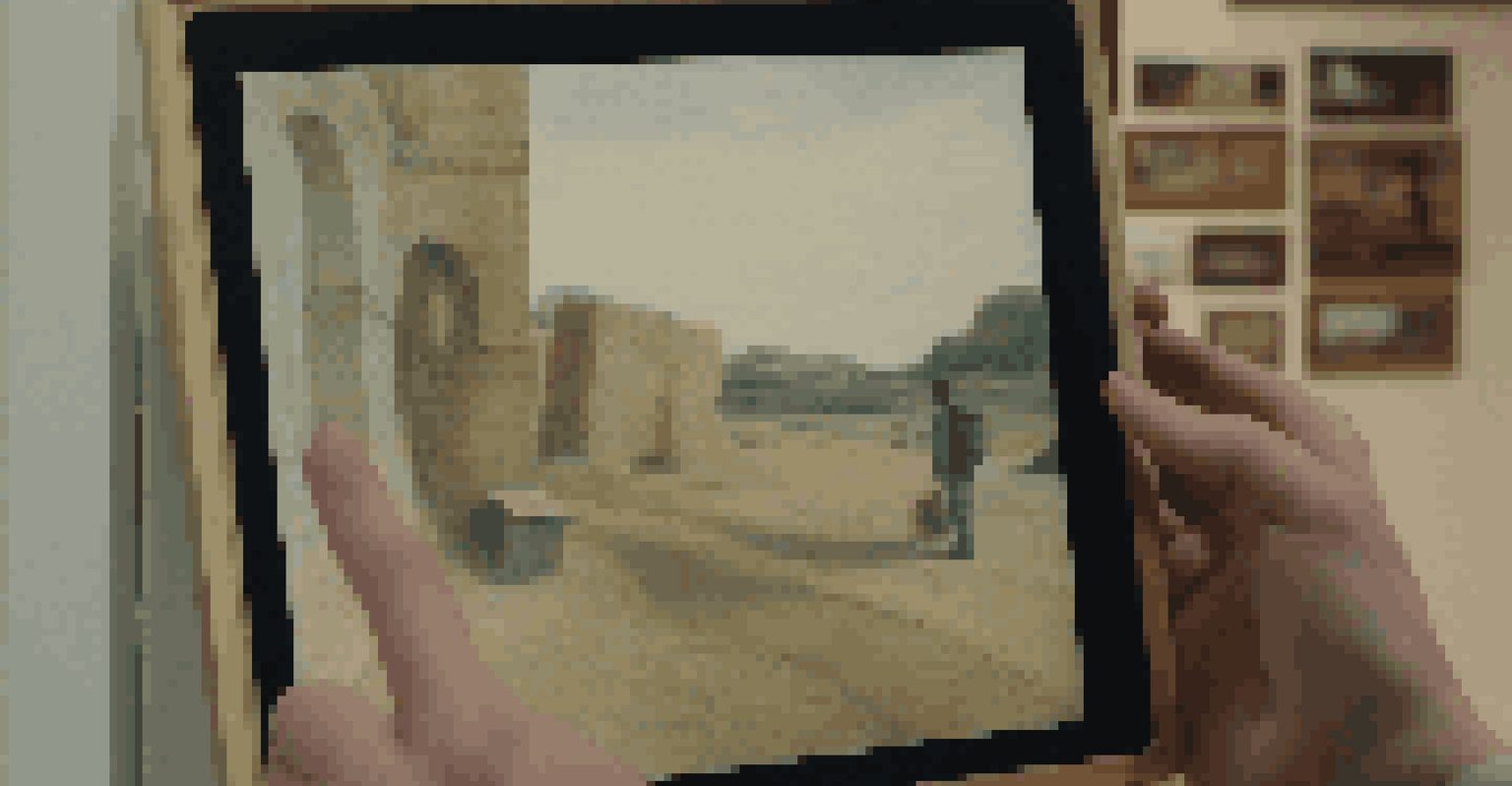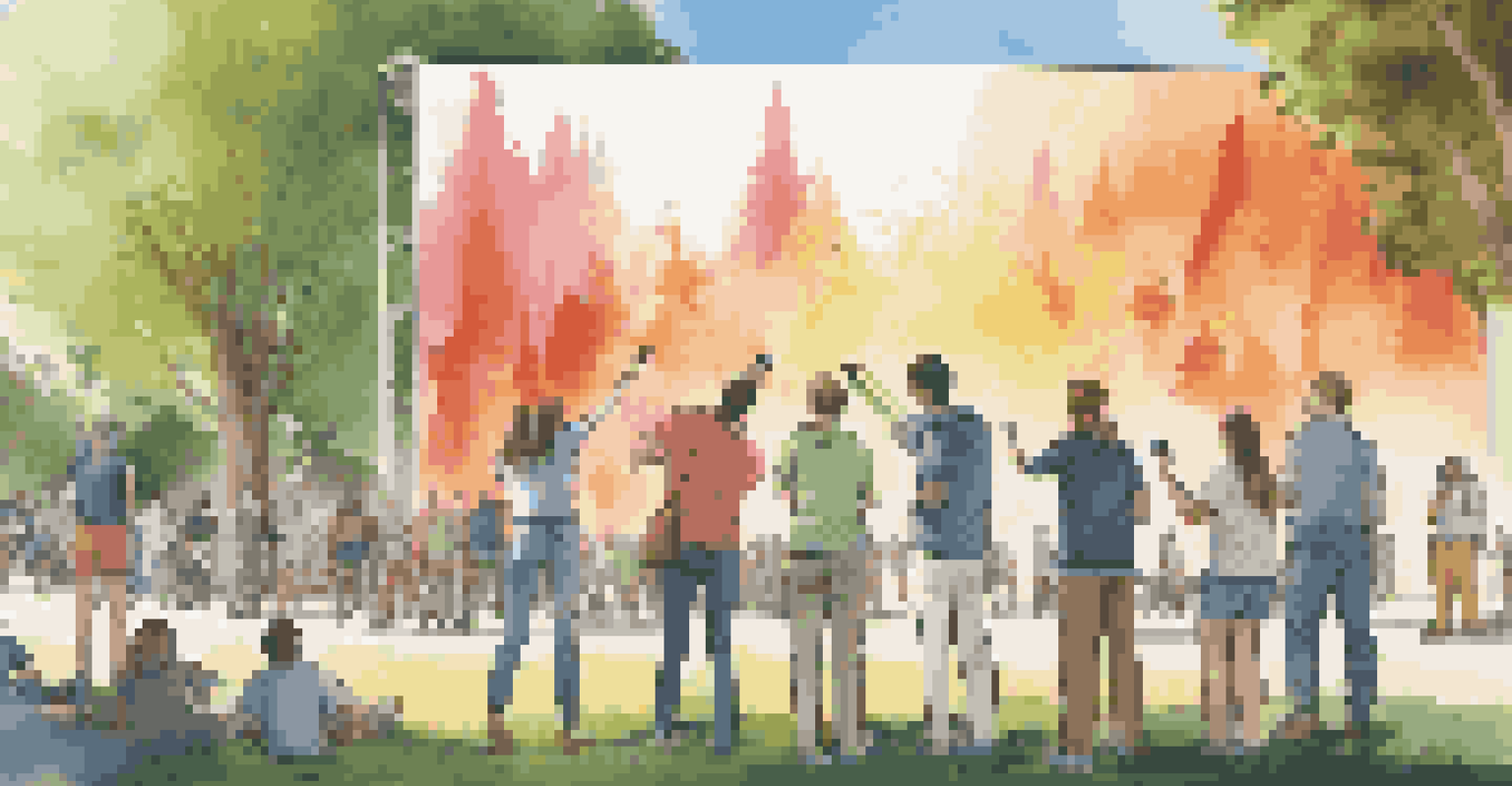Enhancing Student Engagement in Arts Through AR Technology

Understanding Augmented Reality in Education
Augmented Reality (AR) is a technology that overlays digital information onto the real world, creating immersive experiences. In education, AR can transform traditional learning by bringing subjects to life, especially in the arts. Imagine a student viewing a painting and being able to see its history, the artist’s techniques, and even the process of its creation through their device.
The future belongs to those who believe in the beauty of their dreams.
This interactive approach not only makes learning more engaging but also encourages deeper understanding and retention of knowledge. When students can visualize concepts, their interest often peaks, leading to enhanced participation in class discussions and projects. AR serves as a bridge connecting theoretical knowledge with practical application.
By integrating AR into arts education, educators can tailor experiences to meet diverse learning styles, ensuring that all students can engage with the content effectively. With the right tools, the classroom becomes a dynamic space where creativity thrives, paving the way for innovative artistic expression.
Benefits of AR in Arts Engagement
Implementing AR in arts education opens up a world of benefits that can significantly enhance student engagement. For starters, it makes learning interactive; students are not just passive recipients of information but active participants. This hands-on approach can spark curiosity and inspire students to explore their creative potential.

Additionally, AR helps in breaking down complex artistic concepts into digestible parts. For example, when learning about color theory, students can visualize how colors interact in real-time, making the abstract notion more tangible. This visualization can lead to more meaningful discussions and collaborations among peers.
AR Enhances Student Engagement
Augmented Reality transforms learning by making it interactive, encouraging students to actively participate and explore their creativity.
Moreover, AR fosters a sense of community within the classroom. By collaborating on AR projects, students can share their insights and perspectives, enriching the learning experience. This collaborative environment nurtures teamwork and helps students develop essential social skills, all while diving deeper into the world of art.
Real-World Examples of AR in Arts Education
Several educational institutions have successfully integrated AR into their arts programs, showcasing its potential to engage students. For instance, the 'Artivive' app allows students to enhance their art pieces with animations and digital elements, creating a multi-layered experience. This not only showcases their creativity but also allows for personal expression in a modern context.
Creativity is intelligence having fun.
Another inspiring example comes from museums that have adopted AR experiences for school tours. Students can use their devices to scan artworks and receive additional content, such as artist interviews or behind-the-scenes looks at the creation process. This not only captivates their attention but also deepens their appreciation for the artwork.
These examples illustrate how AR can revolutionize the way arts are taught and experienced. By providing students with tools to create and interact with art in innovative ways, educators can foster a lifelong love for the arts.
Challenges in Implementing AR in Arts Curriculum
Despite the numerous advantages, integrating AR into the arts curriculum does come with its challenges. One significant hurdle is the accessibility of technology; not all students may have devices capable of running AR apps. This digital divide can lead to disparities in engagement and learning outcomes, which educators must address.
Another challenge is the need for teacher training. Educators may feel overwhelmed by the prospect of incorporating new technology into their lesson plans. To effectively utilize AR, teachers require proper training and ongoing support to feel confident in implementing these tools in their classrooms.
Challenges in AR Implementation
Despite its benefits, integrating AR into arts education faces hurdles like technology accessibility, teacher training, and content quality.
Lastly, there’s the question of content quality. Not all AR applications are created equal, and educators must carefully vet resources to ensure they are enriching the learning experience. By overcoming these challenges, schools can harness the full potential of AR in arts education.
Strategies for Successful AR Integration
To successfully integrate AR into arts education, schools must adopt strategic approaches that prioritize accessibility and engagement. One effective strategy is to start small with pilot programs that allow teachers to experiment with AR tools before a full-scale rollout. This approach gives educators time to familiarize themselves with the technology and develop effective lesson plans.
Collaboration is also key; schools can partner with tech companies for resources and training. By working together, they can create tailored AR experiences that meet the needs of their students while enhancing their art curriculum. Engaging the community in these initiatives can also foster greater interest and investment in the program.
Finally, continuous feedback from students and teachers can help refine AR applications and strategies. Regularly assessing the effectiveness of AR tools ensures that the technology remains relevant and beneficial, ultimately leading to a more enriching arts education experience.
The Role of AR in Fostering Creativity
AR technology is a powerful ally in nurturing creativity among students. By providing a platform for experimentation, students feel more liberated to express themselves artistically. When they can manipulate digital elements in real-time, the possibilities for creative exploration become virtually limitless.
For instance, AR can enable students to create virtual sculptures or installations that they can share with their peers. This not only encourages innovation but also helps students learn from one another's approaches and techniques. The collaborative aspect of AR can lead to exciting discussions about artistic choices and processes.
Future of AR in Arts Education
The evolution of AR technology promises richer, interactive experiences, potentially leading to new artistic mediums and enhanced learning environments.
Moreover, as students engage with AR tools, they develop critical thinking skills. They learn to analyze their work, make adjustments, and problem-solve in a dynamic environment. This blend of creativity and analytical thinking is essential for success in the arts and beyond.
Future Trends: The Evolution of AR in Arts Education
Looking ahead, the future of AR in arts education appears bright, with continuous advancements in technology paving the way for even more innovative applications. As AR tools become more sophisticated, we can expect to see richer, more interactive experiences that engage students in deeper ways. This evolution will likely lead to the development of new artistic mediums that blend traditional techniques with digital enhancements.
Additionally, the rise of virtual reality (VR) alongside AR could create hybrid learning environments where students can immerse themselves in art history or experience art in new, interactive ways. Imagine walking through a virtual gallery where you can interact with artworks and their creators in real-time, enriching the educational experience even further.

Ultimately, as AR technology continues to evolve, it will likely become an integral part of the arts curriculum, fostering a generation of students who are not only skilled artists but also adept at navigating the digital landscape. This integration will prepare them for future careers in an increasingly tech-driven world.